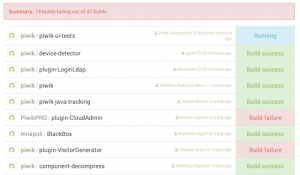A new study finds that almost all job listings specify a location for the position.
” data-credit=”Image: Mendix” rel=”noopener noreferrer nofollow”>
A study by the low-code company Mendix compared job listings in a particular area with the number of software developers living in that same area to understand the supply and demand by state and county.
Image: Mendix
A new study of hiring trends for software developers found that 92% of job listings still list a specific location in the job description despite all the talk about remote work.
Mendix released the 2020 Software Developer Demand Index Thursday, which reveals where the hiring shortage is the biggest at the county and state level in the US. The Mendix study included an analysis of more than three 3 million US households and a geo-analysis of 2,023 recent job postings for software developers.
SEE: Linux commands for user management (TechRepublic Premium)
Unsurprisingly, the state gap between supply and demand is the biggest in middle America. The counties with the highest demand for developers and the lowest supply are:
- Cumberland County, NJ
- Minnehaha County, SD
- Pontotoc County, MS
- Ouachita County, AK
- Rock Island County, IL
- Iroquois County, IL
- Ector County, TX
- Morgan County, UT
- Roanoke County, VA
- Stearns County, MN
The researchers looked at jobs posted during July on Glassdoor, Indeed, and Monster in July to measure demand. Mendix, a Siemens business that specializes in low-code application development for the enterprise, worked with research firm Reputation Leaders to conduct the study.
At the state level, the states with the biggest gap between supply and demand for software developers are:
- South Dakota
- Utah
- Nebraska
- Rhode Island
- Alabama
- Maryland
- Virginia
- Illinois
- Wisconsin
- Vermont
Sheryl Koenigsberg, the global director of product marketing at Mendix, said employers have a few options to address this talent shortage:
- Retrain local workers.
- Find incentives to hire new computer science graduates to small cities and rural areas.
- Expand the group of people who can participate in software development.
- Offer remote ways to collaborate and work.
Koenigsberg said that low-code solutions make it easier to implement several of these strategies, particularly supporting a distributed team with business leaders and developers in different locations.
“It’s easier to retrain people and have someone go from using Power BI to building a software product,” she said.
A low-code approach also reduces the amount of rework caused by a disconnect between requirements spelled out at the start of a project and what a business team actually wants.
“The disconnects between what the business person wants and what IT delivers get resolved earlier in the process so there is only 15% rework instead of 60%,” she said.
Koenigsberg said that the strength of Mendix’s low-code approach is that citizen developers and professional developers use the same platform.
“There’s a single governance and release methodology no matter who writes the code,” she said. “If an accountant creates something, a senior developer doesn’t have to go fix it if they want to scale the solution.”
Koenigsberg said that the survey reinforces Mendix’s investments in collaboration as an important element of software development and work in general.
The study also looked at commute times and average rents in the counties with the biggest talent shortages. The average monthly rent among the top 10 counties was $707 as compared to $1,001 for the US overall. Commute time was 22 minutes compared to 28.
To establish the ratio of supply of developer talent to the demand in the job market, Reputation Leaders used data from the 2018 American Community Survey to determine the number of IT professionals in a particular county. Reputation Leaders also used the ACS data to determine salaries, commute time, and rental costs in each county. The researchers also categorized unfilled jobs at a city level, which was rolled up to a county total. The demand index is the number of job ads for every 100,000 people in the given geography.
Also see
Source of Article




